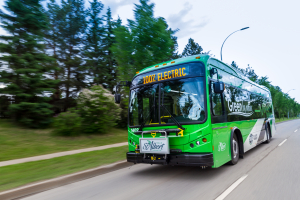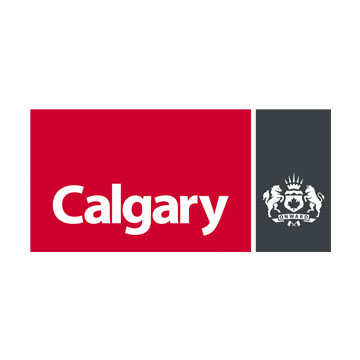On Tuesday, June 2, 2020, the AEF had our laptop-screen debut at the online 29th Annual Emerald Awards. A week later, we’re still beaming from our talented performers: Julian Faid, for making us laugh; Audrey Lane Cockett, for inspiring us; and Giselle Denis, for bringing her brilliant creative vision to canvas. In case you missed them, or just want to relive the magic, you can watch the Emeralds on YouTube.
The AEF team is thankful for the support of FMAV, Details! Convention & Event Management, Hoopla Media, Studio Hazel, and of course our Community Partners, for bringing our 29th Annual Emerald Awards vision to life. For us the show must go on, and we’re so proud of the innovation sprouted from how we celebrate these incredible achievements in our province.
A huge congratulations to this year’s recipients; it’s your magnificent work and unwavering commitment to our natural world that make the Emeralds possible. We’re looking forward to featuring them in the What On EARTH Can We Do? Podcast, Emerald Documentary Series, and Emerald Speakers Series. Without further ado, it’s our pleasure to introduce them!
🏆 AGROFORESTRY & WOODLOT EXTENSION SOCIETY
Since 2010, the Agroforestry and Extension Society (AWES) has assisted rural private landowners in both understanding and enhancing their natural environment through extension, education and actively completing projects. The two key areas of focus are information and knowledge transfer and direct site restoration by specialists in vegetation management for landowners across the province. The landowners have been agricultural producers, acreage owners and in some cases municipal lands. The results of both the extension and active projects have enhanced the local biodiversity, the habitat for wildlife, including native pollinators, watershed protection and the level of carbon capture in the province of Alberta, on private lands.
🏆 ALBERTA URBAN MUNICIPALITIES ASSOCIATION AND RURAL MUNICIPALITIES OF ALBERTA
Since 2009, the Municipal Climate Change Action Centre (MCCAC) has been helping Alberta municipalities, schools, nonprofit and community-related organizations reduce greenhouse gas (GHG) emissions. MCCAC created programs to overcome organizational challenges, build capacity, and implement projects. The MCCAC initiative is delivered outside of the core business of AUMA and RMA (both membership-based advocacy organizations). For the last decade, they have supported their members’ action on climate change, delivering programs and services to 145 municipalities, including 101 municipal authorities across Alberta.
🏆 W.I.L.D. PROGRAM – ÉCOLE MANACHABAN MIDDLE SCHOOL
Within the W.I.L.D. program, there are six distinct outdoor field excursions that shows exceptional leadership and creativity in educating students of all ages about environmental matters. These successive camps scaffold and build up wilderness skills. The W.I.L.D. program is lauded by educators, students, and parents within the Rocky View School Division as a catalyst in developing youth safety awareness as the primary skill as they will continue to be involved in outdoor pursuits throughout their lives.

🏆 COCHRANE HIGH SCHOOL SUSTAINABLE DEVELOPMENT COMMITTEE
Cochrane High School’s Sustainable Development Committee pursues projects that will promote the well-being of our future generations. Phase IX involved installing a 50.05 kWh photovoltaic system capable of off-setting 8.3% of our electrical consumption from traditional carbon sources. This phase of our project took 18 months to accomplish and hundreds of hours of collective work. What makes the Sustainable Development Phase IX Project stand out is the students’ unselfish desire to provide real solutions to move their school forward; their unyielding strength to finish what they start in spite of many obstacles; and their courage to take risks as we struggle to rebrand Alberta not as an oil and gas leader, but as an energy leader.
🏆 CITY OF ST. ALBERT
The City of St. Albert’s City Council, Environmental Advisory Committee, City staff and residents have created a vision to grow as a Smart City: a place that fosters innovation and collaboration, applies new technologies and data, generates municipal efficiencies, improves service delivery, and supports economic growth. This forward-thinking approach motivated the City’s participation in electric bus (EV bus) pilot projects in 2014 and 2015. The two successful pilot projects illustrated how long-range, battery powered buses would perform in summer and winter conditions and demonstrated the suitability of EV buses in building a greener and more sustainable public transportation system. The City then purchased three 35-foot EV buses in early 2017 and expanded the EV bus fleet with four additional buses in 2018. While the environmental benefits of operating EV buses were apparent; to reduce the carbon footprint further, the City installed 753 solar photovoltaics (PV) panels on the transit building roof to provide sustainable power for the EV buses and some of the building operations. St. Albert Transit is significant in the City’s mandate for continual improvement and working towards a sustainable future for the community.

🏆 EDMONTON CONVENTION CENTRE
Built into the banks of the North Saskatchewan River Valley, the Edmonton Convention Centre connects to our land through a commitment to sustainable business practices. They invest human and capital resources by promoting and achieving sustainable outcomes because they want to be an entity that creates positive industry change. The ECC believes that together with clients and partners, they can make the events industry a sustainable industry. Every action within the sustainability program has been developed to support the goal of achieving GHG reduction targets. In the past year, ECC launched the Greenhouse Gas Reduction Plan, the Responsible Meetings Program, created the Environmental Preferred Purchasing Policy, began undertaking Canada’s largest installation of building-integrated solar panels, launched a plant-based menu, improved waste diversion by 28% and hosted our city’s first-ever carbon neutral convention, SPARK 2019.
🏆 PRES WINTER
Starting in 1977, Pres has placed 200 nest boxes along roadsides in a 12 mile radius of Viking, where you would have been hard pressed to find any blue birds. He expanded his trail to over 275 miles and over 1200 nest boxes. Each year, he cleans and repairs nests, counts and records returning bluebirds, eggs laid, and chicks hatched and banded. In his first year, 14 active nests were recorded. He has expanded his trail and in 2006, he had 560 active first nests, 174 second nests and banded 2861 blue birds. In 2015, which was his record year, he had 441 first nests, 260 second nests and banded 3167 bluebirds. This labour of love and caring for the ecosystem of our region has been done all on volunteer time and resources.
🏆 Inside Education
Since 2011, Inside Education has developed and delivered environmental leadership summits geared towards high school students. These summits provide young leaders from across Alberta, including urban, rural, and Indigenous communities, the opportunity to learn with and from Alberta’s experts in energy, water, climate and agriculture. Students develop peer-to-peer engagement as they work to develop action plans for their home, school and community. Each summit features an education and action plan that each school team develops themselves. This extends the learning and outcomes beyond the participants to the broader high school student body and communities across Alberta.
🏆 DALE HODGES PARK
The nature of Calgary’s stormwater system means that in any rain event stormwater can carry sediments and contaminants from roads and pathways into the river. One such situation existed beneath Dale Hodges Park, where stormwater from 8 NW communities (1,775 hectare catchment area) comprising one tenth of the city’s stormwater was discharged untreated into the Bow River. The sediment can pollute the river, impacting water quality for fish, animals, birds, plants, and people. As lead artists for Watershed+, Sans façon led the conceptual development and bridged the collaborative design process between diverse disciplines to restore ecological integrity while simultaneously treating stormwater. The result is a 40 hectare artwork, public park and stormwater treatment facility unique in North America that features diverse habitats created by stormwater. The park expands the possibilities of connection and appreciation of the complexities of watershed management.

🏆 ECO-GROWTH ENVIRONMENTAL INC.
The Waste to Energy Project is Kim Caron’s Eco-Growth Food Waste Diversion program implemented at the ConocoPhillips plant in Surmont, Alberta. Eco-Growth Environmental worked with the OWLS committee to design and install an Eco-Growth Organic Reactor (EGOR) system. At ConocoPhillips, Eco-Growth technology is utilized to turn approximately 385 kilograms of raw waste, including food, organics, paper and grease, into about 77 kilograms of high-quality biomass every 24 hours. The resulting product is used in place of sawdust in industrial processes, reducing the company’s carbon footprint.







